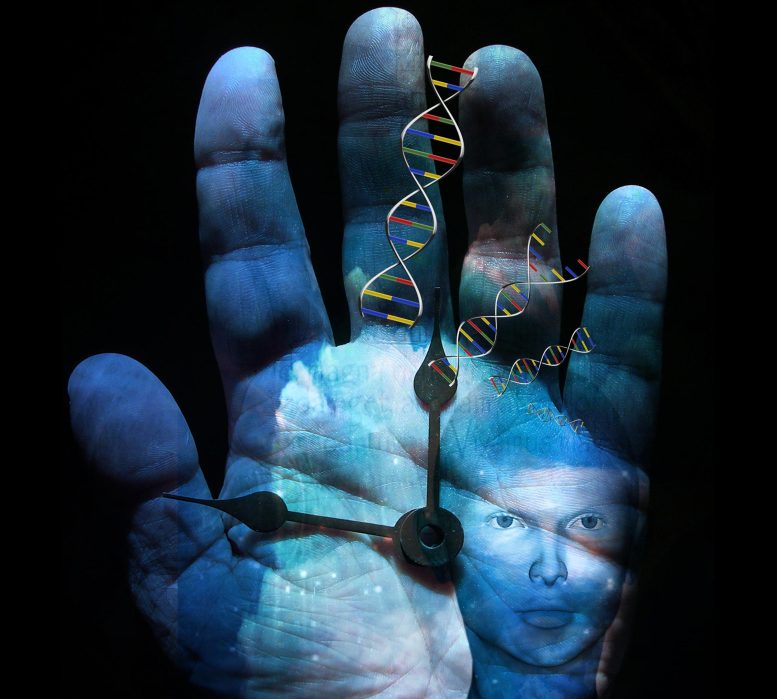
A newly published study analyzes genetic and paleoanthropological evidence, showing that today’s human population is the result of a great demographic and geographic expansion that began approximately 45,000 to 60,000 years ago in Africa.
A comprehensive analysis of the anthropological and genetic history of humans’ expansion out of Africa could lead to medical advances.
A new, comprehensive review of humans’ anthropological and genetic records gives the most up-to-date story of the “Out of Africa” expansion that occurred about 45,000 to 60,000 years ago.
This expansion, detailed by three Stanford geneticists, had a dramatic effect on human genetic diversity, which persists in present-day populations. As a small group of modern humans migrated out of Africa into Eurasia and the Americas, their genetic diversity was substantially reduced.
In studying these migrations, genomic projects haven’t fully taken into account the rich archaeological and anthropological data available, and vice versa. This review integrates both sides of the story and provides a foundation that could lead to better understanding of ancient humans and, possibly, genomic and medical advances.
“People are doing amazing genome sequencing, but they don’t always understand human demographic history” that can help inform an investigation, said review co-author Brenna Henn, a postdoctoral fellow in genetics at the Stanford School of Medicine who has a PhD in anthropology from Stanford. “We wanted to write this as a primer on pre-human history for people who are not anthropologists.”
This model of the Out of Africa expansion provides the framework for testing other anthropological and genetic models, Henn said, and will allow researchers to constrain various parameters on computer simulations, which will ultimately improve their accuracy.
“The basic notion is that all of these disciplines have to be considered simultaneously when thinking about movements of ancient populations,” said Marcus Feldman, a professor of biology at Stanford and the senior author of the paper. “What we’re proposing is a story that has potential to explain any of the fossil record that subsequently becomes available, and to be able to tell what was the size of the population in that place at that time.”
The anthropological information can inform geneticists when they investigate certain genetic changes that emerge over time. For example, geneticists have found that genes that allowed humans to tolerate lactose and gluten began to emerge in populations expanding into Europe around 10,000 years ago.
The anthropological record helps explain this: It was around this time that humans embraced agriculture, including milk and wheat production. The populations that prospered – and thus those who survived to pass on these mutations – were those who embraced these unnatural food sources. This, said Feldman, is an example of how human movements drove a new form of natural selection.
Populations that expand from a small founding group can also exhibit reduced genetic diversity – known as a “bottleneck” – a classic example being the Ashkenazi Jewish population, which has a fairly large number of genetic diseases that can be attributed to its small number of founders. When this small group moved from the Rhineland to Eastern Europe, reproduction occurred mainly within the group, eventually leading to situations in which mothers and fathers were related. This meant that offspring often received the same deleterious gene from each parent and, as this process continued, ultimately resulted in a population in which certain diseases and cancers are more prevalent.
“If you know something about the demographic history of populations, you may be able to learn something about the reasons why a group today has a certain genetic abnormality – either good or bad,” Feldman said. “That’s one of the reasons why in our work we focus on the importance of migration and history of mixing in human populations. It helps you assess the kinds of things you might be looking for in a first clinical assessment. It doesn’t have the immediacy of prescribing chemotherapy – it’s a more general look at what’s the status of human variability in DNA, and how might that inform a clinician.”
The study is published in the current edition of the Proceedings of the National Academy of Sciences and was co-authored by Feldman’s longtime collaborator, population geneticist Luigi Luca Cavalli-Sforza of Stanford and the Università Vita-Salute San Raffaele in Italy.
Reference: “The great human expansion” by Brenna M. Henn, L. L. Cavalli-Sforza and Marcus W. Feldman, 17 October 2012, Proceedings of the National Academy of Sciences.
DOI: 10.1073/pnas.1212380109
1 Comment
Lactose and Gluten tolerance genes that appeared only about 10000 years ago in Europe when already ancient population migrated from Africa, which spread later on to Eurasia and then to America. This indicates that we have all come from an African mother some 45000 to 60000 years ago. The article provides genetic proof for the great geographic and demographic proof for the out of Africa Theory. Lactose and gluten tolerance appeared only after the modern man learnt cattle rearing, poultry rearing and agriculture emerging from the wilderness of mere hunting for daily bread. The personality traits of Africans , Asians, Mongols, and Europeans differ mainly because of their climate, food and inhabiting environments. In very warm tropical regions of Africa, Latin America, Southern India, Srilanka and Malaysia more melanin had worked out into their skin fabrication to give them dark complexion of varying shades. In ice-cold countries of Europe and migrated America, Scandinavia, China and Russia, lack of sunlight had made them with poor melanin and they became white race. The stature is due to the calorie intake of their predecessors to become heavily built. Modern human competitors like Neanderthals were already wiped off by the modern man (Cro-Magnon or EEMH -European Early Modern Humans). Out of Africa Theory still goes unchallengeable in science. Thank You.